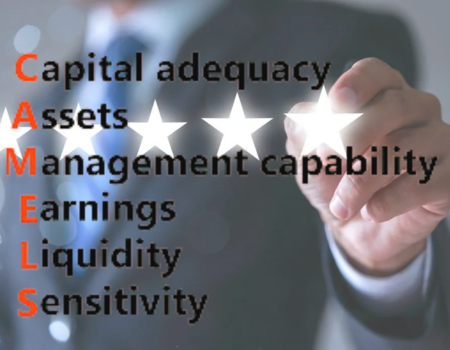Call us: +1-855-202-3299
Email: [email protected]
CAMELS Evaluation and Ratings System plus Examination of CCAR and CLAR
Speaker: Robert Geary
Speaker Designation: Founder, Greenwich Risk Management Advisory Services

Call us: +1-855-202-3299
Email: [email protected]
Speaker: Robert Geary
Speaker Designation: Founder, Greenwich Risk Management Advisory Services

CAMELS is a key evaluation methodology used by U.S. regulators, including the Federal Reserve Bank, Comptroller of the Currency, and Federal Deposit Insurance Corporation, to assess banks. The acronym stands for Capital Adequacy, Asset Quality, Management Quality, Earnings, Liquidity, and Sensitivity to Market Risk—components that are evaluated in detail. Based on this evaluation, banks receive ratings for each component and an overall composite rating. It is crucial for executive management, senior business leaders, and staff managing CAMELS components to understand the evaluation process, how ratings are determined, and the potential impact on the bank's current and future initiatives.
Additionally, CCAR and CLAR are important methodologies used to evaluate a bank’s capital and liquidity, focusing on both current and projected conditions. These evaluations incorporate stress testing and result in pass/fail ratings. Understanding these processes is also essential for executive management, senior business leaders, and those overseeing capital and liquidity.
The U.S. banking environment has faced various challenges over the years, and regulators are diligent in ensuring that banks meet required standards in key operational areas, which, if unmet, could affect a bank's viability. Regulators continuously improve their assessment methodologies and monitoring processes, increasing the focus of bank management on these evaluations.
Responsibility for CAMELS, CCAR, and CLAR evaluations lies with a bank’s Board of Directors, executive management, and senior business management. However, specific management of each area falls to the staff responsible for meeting and maintaining the regulatory standards.
This presentation examines the evaluation methodologies of CAMELS, CCAR, and CLAR, focusing on structural considerations and the quality of management in each component. It also covers the rating process for individual components and the overall CAMELS composite rating, along with the factors that influence these ratings.
US bank regulators have continued to enhance their oversight of the major areas of risks to banks. The major risk evaluation and rating programs that have been introduced are CAMELS, CCAR, and CLAR. This presentation provides a thorough review and understanding of these programs.
With respect to CAMELS, the Areas Covered are:
With respect to CCAR and CLAR, the Areas Covered are:
Together, the CAMELS, CCAR, and CLAR frameworks provide a holistic approach to bank supervision, ensuring that U.S. financial institutions remain resilient, well-capitalized, and able to manage risks effectively in both current and future environments. These evaluations are crucial for safeguarding the banking sector and promoting financial stability across the economy.
This webinar will be available soon. Please contact customer care for new schedule date.

Robert Geary is the founder of Greenwich Risk Management Advisory Services "LLC" and services as the principal consultant on many of the firm’s consultancy mandates.
Robert has been a banking and finance industry professional for 43 years with 34 years serving in a variety of senior Treasury, financial market, asset management and risk management roles at JP Morgan Chase & Co. For the last 6 years of his career with JP Morgan Chase, Robert had undertaken risk management oversight roles that have included Head of Market, Credit and Operational Risk Management for Chase Asset Management and being Managing Director of Fiduciary Risk Management for the Corporation. During Robert’s career he has served on the Board of Directors of Chase Manhattan Overseas Banking Corporation as well as having served on numerous senior committees. Prior to joining Chase, he held positions at Chemical Bank, Chrysler Financial Corporation and National Bank of North America.
Robert holds a BA degree in Economics from Pace University and did graduate studies in finance at New York University Graduate School of Business. He is a Past President of the New York Athletic Club and is currently a member of the Executive Advisory Board of St. John’s University Department of Accounting and Taxation.